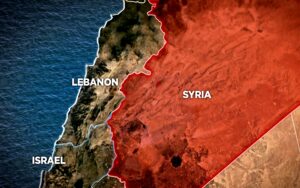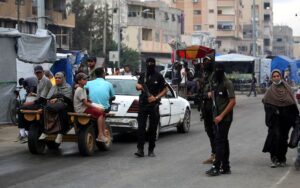What winter is ahead in the Ukraine war?

With winter approaching in Ukraine, the two warring sides are increasingly concerned that mud, snow and cold will complicate the conduct of military operations in the coming months.
The impact of this on the Ukrainian forces will be greater than on the Russian forces.
The Ukrainian army is launching an offensive to restore the lands controlled by Moscow, and doesn’t want to stop its progress to take advantage of its recent gains before the onset of winter.
This prompted US Defense Secretary Lloyd Austin to say last week that “winter is always a fighting challenge,” but he expected Ukraine to continue to do all it can during the winter to regain territory and remain effective on the battlefield.
This was also expressed by Mark Kansian of the Center for Strategic and International Studies, who mentions at the same time that the war began in the middle of winter in February, and therefore the belligerents have experience in this type of fighting.
“I think we’ll soon see a slowdown when the mud starts to show,” Kansian said.
After that, he added, “fighting will resume during the winter”, but it may not be as high as it was in the clear days.
In fact, fighting will not be easy in the thick of winter, soldiers will feel cold and their weapons and machinery will be difficult to maintain to keep them in good condition, and mines will be covered with snow, making them even more difficult to detect.
It’s hard to “continue on the battlefield, maintain equipment… and operate machinery when temperatures drop,” says Michael O’Hanlon of the Brookings Institution think tank.
However, he added, “These facts don’t prevent the possibility of fighting, but they certainly limit it”.
Kansian, a former general in the US Marines, believes that the fighting can be concentrated around villages because of the shelters they provide for the forces that control them.
And the equipment provided by the allies to the Ukrainian forces, including warm clothes and special equipment for the severe cold, ensures that Ukraine is superior to Russia, which has faced logistical problems since the beginning of the war.
Canada has promised 500,000 items of winter clothing, including jackets, pants, boots and gloves, while Lithuania is fully preparing 25,000 Ukrainian soldiers for the winter.
Germany provided hundreds of thousands of hats, jackets and pants to Kyiv.
The United States and Britain also delivered winter clothes in their recent military aid to Ukraine.
Nevertheless, it is important for Ukrainian forces to move quickly after recent successes on the battlefield, not only because winter is approaching, but because the mobilization of forces in Russia is beginning to pay off as new forces arrive on the battlefield.
According to Kansian, Moscow is betting that “the mobilization and the weather will lead to the stability of the front lines”.
Russia believes, according to Kansian, that it can prolong the war in the hope that European support for Ukraine will dwindle with higher energy prices and lower temperatures, considering that this is a strategy that will fail.
Kansian said the Ukrainians “are facing adversity…) and they are making sacrifices but they are far from collapsing, and I don’t think anyone expects Ukrainian morale to collapse”.
Jan Gentile, a military historian at Rand Corporation, said the resilience shown by the Ukrainian population could help the country’s army fight this winter.
“They consider that they are fighting for their existence that they are showing combative power, and this doesn’t seem to apply to the Russian forces,” he said.
He stressed that it is “a psychological factor that can… help withstand the cold and bad weather”.








